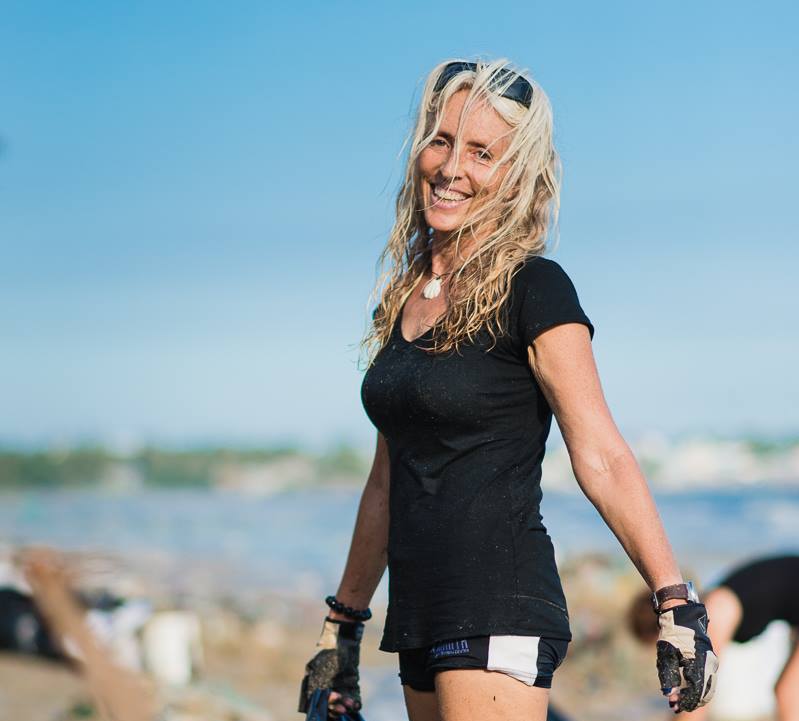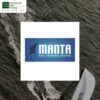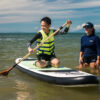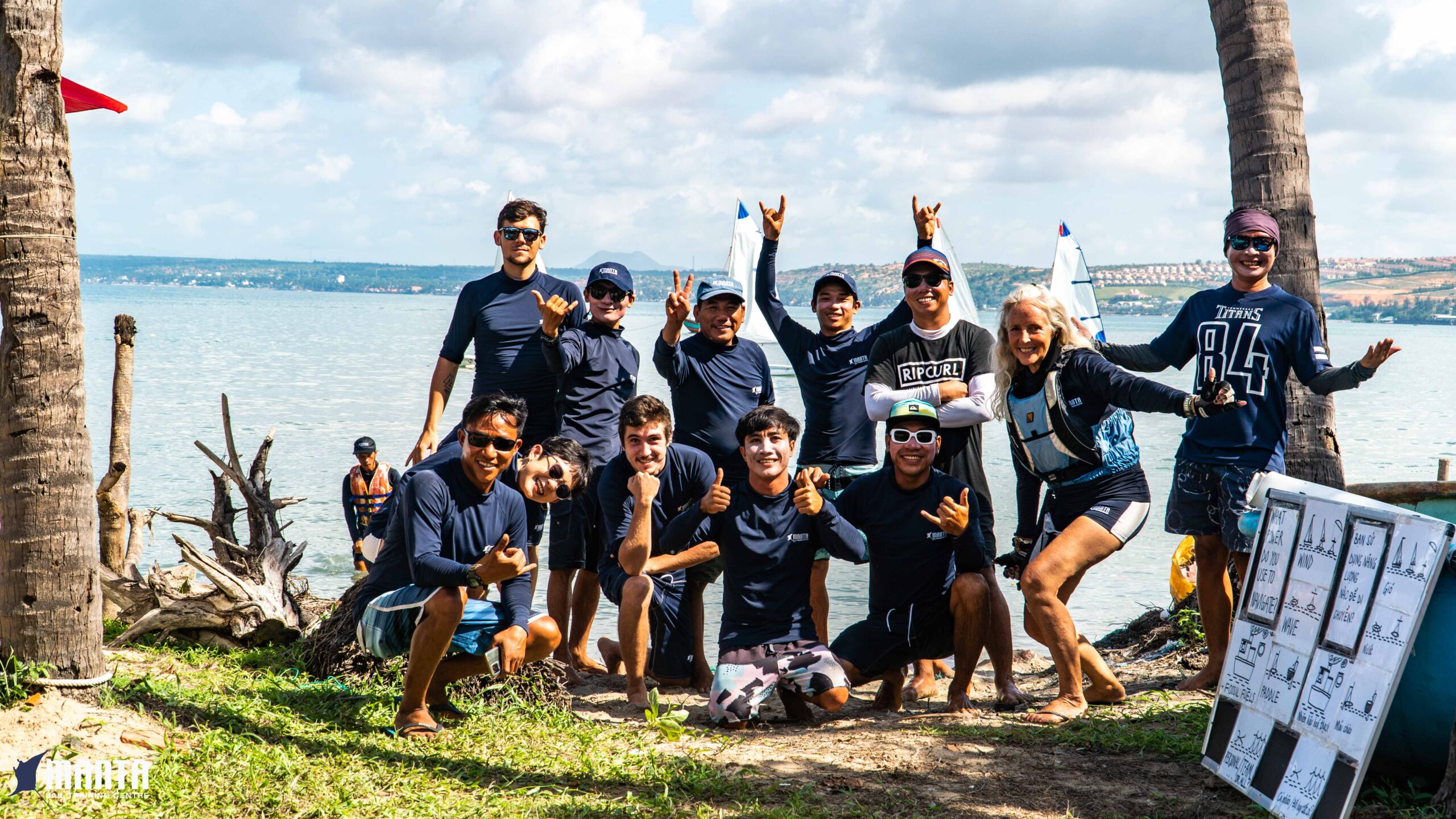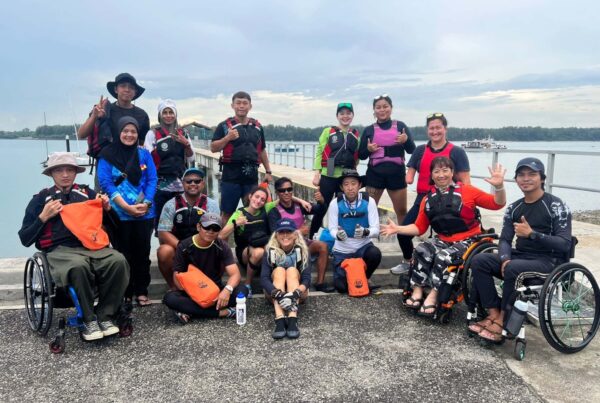It’s an exciting day at Corsair Marine International. The well-established sailboat-building company is launching a 50-foot custom-built catamaran called the Mango Moon. The boat’s owners, Frank and Lisa Coale, recently traveled to Vietnam from the United States to take stock of their new cruising vessel. From here, they’ll sail around the world.
The Coales’ plan conjures images of starry nights at sea and exotic locales but it also gets one thinking about what’s happening in sailing closer to home. Vietnam has a vast coastline but there aren’t many sailboats cruising local waters.
Wind-powered fishing boats were once common in Vietnam but by the late 1960, motorboats had rendered them obsolete and the country’s only link to sailing disappeared. A sailing culture never took hold and, as a result, Vietnam’s exposure to cruising has been limited.
According to Phil Johns, marketing and business development manager at Corsair Marine, the reason we’re not seeing boats is because recreational sailing is, in fact, new to Vietnam. Typically it’s been foreigners who have introduced the concept of leisure sailing to developing countries.
Johns said when Corsair Marine’s operations relocated from California to Vietnam in 2006, its Western customer base continued to be the primary market. However, as sailing gains popularity and as local consumers’ disposable incomes grow, Corsair Marine is also beginning to generate interest from the Vietnamese market, he said.
Raising the Mast
If you want to know what’s happening in sailing, Julia Shaw is the person to talk to. Shaw has been sailing since she was five years old and teaching others to sail since she was six. As director of MANTA, an organization that promotes environmental development, much of Shaw’s work originally focused on marine conservation. But over time Shaw has incorporated her love of sailing into the mix, focusing her efforts on developing sailing throughout Vietnam. This month she opened her own sailing school in Mui Ne.
Shaw said that although Vietnam had a fair way to go before it became an established sailing destination, she expected things to move along smoothly. “Sailing is gathering popularity in Vietnam in its own right, as well as leading on from the success of other sail sports like kitesurfing and windsurfing,” she said.
To keep the momentum going, Shaw is working hard to promote sailing throughout the country. Much of her time is spent facilitating sailing training, which are short-term, intensive courses that teach sailing basics. Her students are primarily expat kids and adults but Shaw is also training fisherman so they can use the skills in the tourism industry. The aim is to reduce competition in the seafood industry and curb over-fishing.
At the policy level, Shaw is writing a seven-year plan for the Vietnam Olympic Committee for both leisure and competitive sailing. She has partnered with the Ministry of Transport to certify all sailing captains and is developing a yacht master manual. Another partnership with the government aims to develop a national sailing organization that emphasizes proper training.
“We’re very conscious about developing safety standards as well as respecting the government’s standards and would like to work together with them, as a double-check,” Shaw said.
Meanwhile in Mui Ne
In addition to Shaw’s soon-to-open sailing school, more development is underway in the seaside town of Mui Ne, where much of the momentum behind the sailing scene gathering.
On a quiet stretch of beach, away from the bustling resorts and restaurants, Rick Crandall is building a 50-foot catamaran. Crandall, owner of Shades Resort Apartments, already owns a 27-foot Corsair trimaran that he charters for excursions. He acknowledged there’s not a lot of sailing happening in Mui Ne at the moment but said steps are being taken to develop it into a sailing destination.
“The best sailing in Vietnam is in Hoi An, mainly because it has an island destination, the Cham Islands,” said Crandall. Indeed, a Hoi An-based outfit called Vietnam Sailing recently began running private trips to the islands on a Corsair trimaran.
Crandall said if Mui Ne had its own developed island destination, it would be more ideal for sailing. Phu Quy Island, 50 miles from Mui Ne, has some potential to fill that need, he said. “Phu Quy is undeveloped but it could be a gorgeous destination if there was appropriate infrastructure. But right now, even overnight accommodation is limited to a guest house or home stay.”
Pascal Lefebvre, owner of Jibes Beach Club is so confident of Mui Ne’s potential to become a serious sailing destination that he’s building a second Jibes on nearby Suoi Nuoc Beach, along with 22 villas, to cater to this potential market.
“Sailing conditions are great at Suoi Nuoc and it’s very close to Mui Ne,” Lefebvre said. “It’s much easier to put a boat in the water there, and we’ve got a lot of space for boats.” Lefebvre also plans to offer lessons and provide sailboat rentals. He has already invested in a few 16-foot catamarans (which he also distributes) and eventually, he’ll bring in a 60-foot catamaran from France for charters.
Still, there are some who say that Mui Ne isn’t ideal for sailing but Shaw feels differently. “Mui Ne is an amazing sailing destination where sailing can indeed take place year round. It has wind and kitesurfing six months out of the year, but people don’t realize that sailing isn’t restricted to strong onshore winds. As long as there is a gentle gradient and no beach break, it’s possible to experience some good sailing.” Shaw pointed out that the Korean Olympic team trained in Mui Ne most years.
Shaw and Crandall are both confident that a marina will be constructed in Mui Ne in the next several years, which should encourage more sailboats to moor in the area. Mui Ne also needs a coastal cruising handbook, a manual that plots the coastline from a cruising sailor’s point of view, listing essential information like where to locate food, water and medical assistance, as well as places to anchor and find shelter from storms. Although there are existing French, Vietnamese and American charts of the coast, these maps don’t address points that a cruising sailor needs to navigate.
While these and other initiatives need to develop further, Lefebvre visualizes sailing becoming so accessible that it could even extend to Ho Chi Minh City’s doorstep.
“There are lots of options for growing sailing within Vietnam,” Lefebvre said. “It’s possible to charter an 80-foot sailboat to pick up clients in Saigon during certain times of the year and go downwind straight to Hoi An or further. Tourists can fly back to Saigon or get to Mui Ne and, at some point, to Phu Quy Island if it develops.”
Although it will likely take five to 10 years to see significant developments, the future looks bright indeed. “This will be a new destination for people,” Lefebvre said. “There are still so many places that haven’t been overrun with tourists, and that’s what makes them special.”
